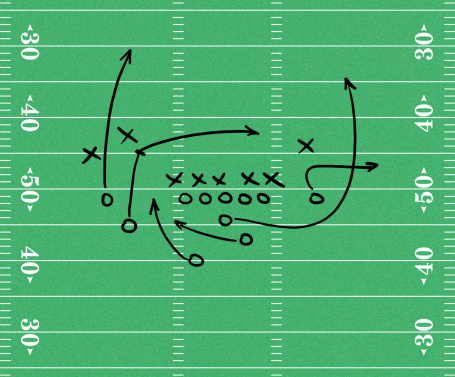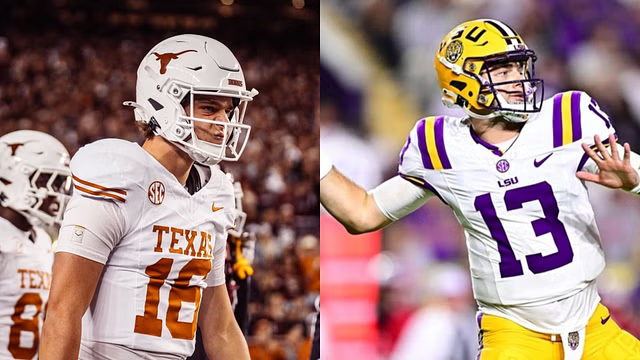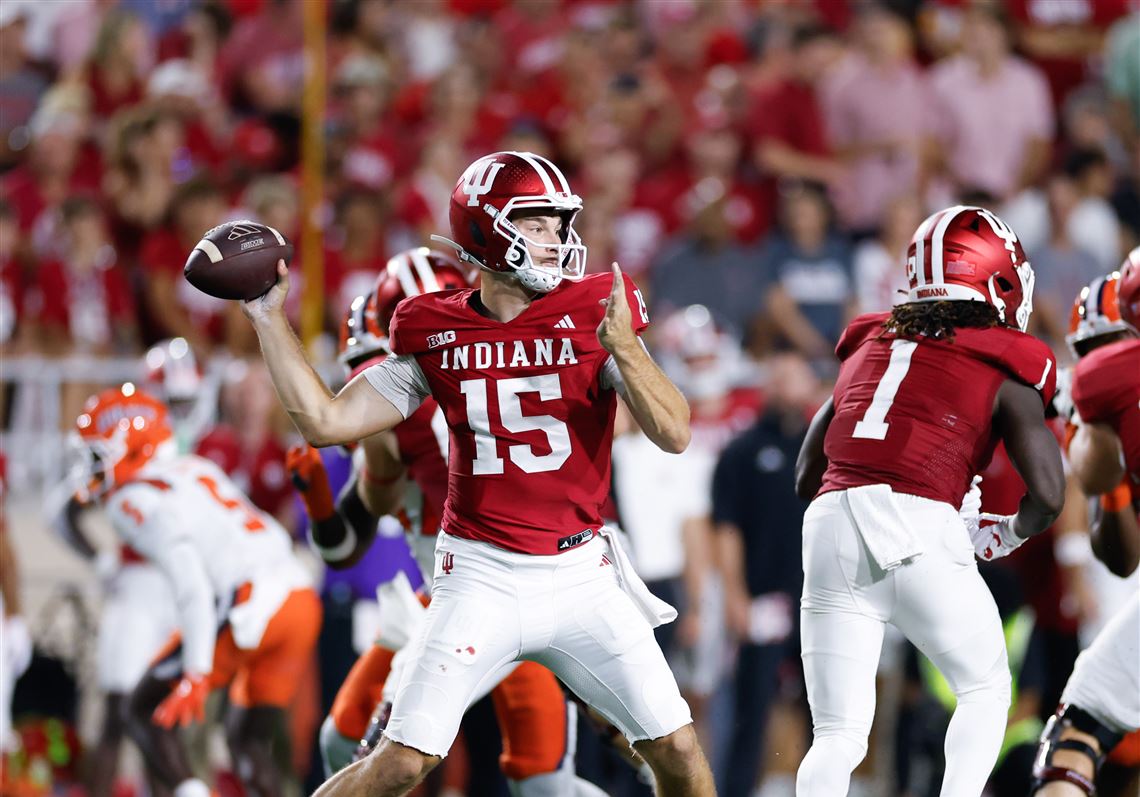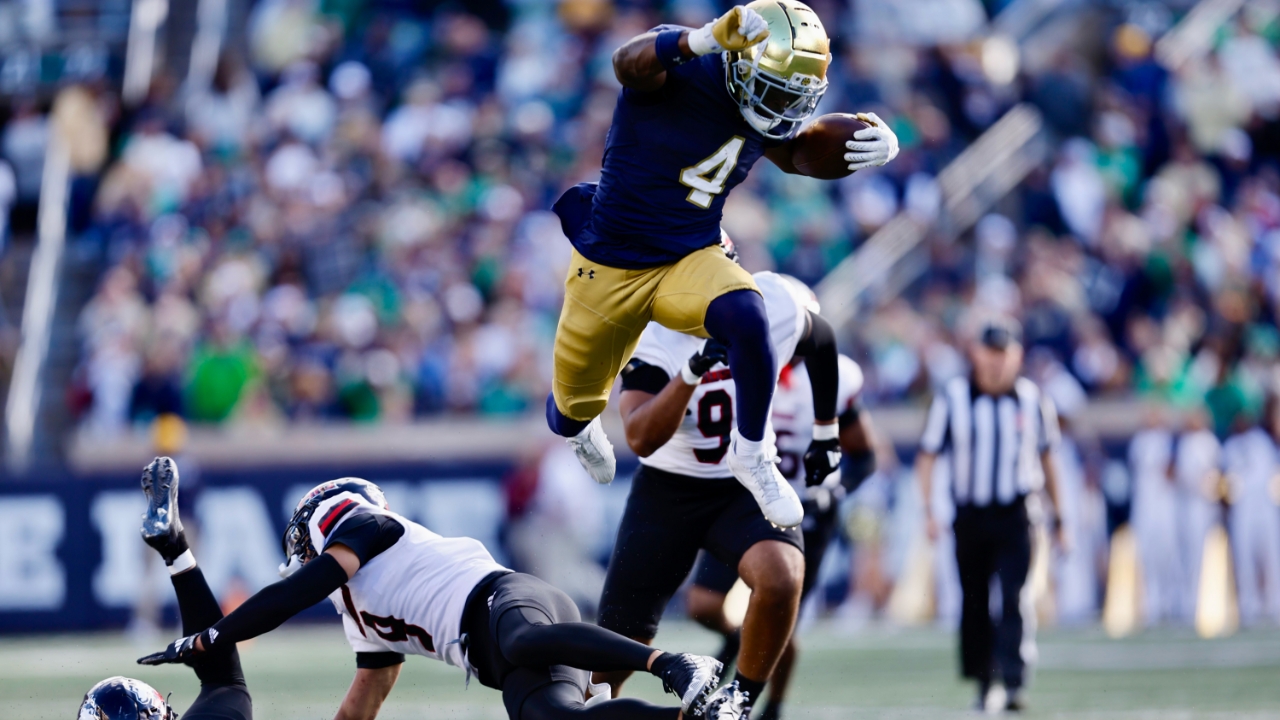By Charlie Campbell.
Send Charlie an e-mail here: [email protected]
Follow Charlie on Twitter @draftcampbell for updates.
This page was last updated March 18, 2019. Follow me @walterfootball for updates.
Offensive Tackle Class
Early-round talent: B+
Mid-round: C
Late-round: C-
Overall grade: B-
2019 prospects vs 2018
Mike McGlinchey
Jawaan Taylor
Kolton Miller
Greg Little
Cody Ford
Isaiah Wynn
Jonah Williams
Andre Dillard
Austin Corbett
Connor Williams
Brian O’Neill
Dalton Risner
Brandon Parker
Geron Christian
David Edwards
Isaiah Prince
Two years ago, the offensive tackle was the worst position in the 2017 NFL Draft, and it was a class that severely lacked talent. The position was not as bad for the 2018 NFL Draft, but it definitely was not a strong class with abundance of good prospects. Overall, this year’s class of offensive tackles is the better than that of 2017 or 2018, but it not a very talented class. This year, the class is top heavy with five potential first-rounders, but then a massive drop-off in talent for the second and third days of the draft.
If you were to merge the two classes, Mike McGlinchey would be the best prospect. He would have been the top offensive tackle in the 2017 NFL Draft if he had decided to skip his senior year. Jawaan Taylor has a better skill set, but McGlinchey entered the league with more development and better technique. Kolton Miller is a slightly better prospect than Greg Little or Cody Ford. Jonah Williams and Andre Dillard aren’t as good of prospects as Isaiah Wynn, but they might end up being selected higher than Wynn. Dalton Risner is a late second-round-, early third-round-caliber player who is on a par with Brian O’Neill and Brandon Parker. David Edwards and Isaiah Prince aren’t as good of prospects as Geron Christian.
Safest Pick: Cody Ford, Oklahoma

Previous Picks:
2018: Mike McGlinchey
2017: Garett Bolles
2016: Larmey Tunsil
2015: Ereck Flowers
2014: Jake Matthews
2013: Luke Joeckel
My track record here is mixed. Bolles has had a mixed start to his career, and it is still too early to make any judgements on him. Tunsil has had good seasons to start his career. Flowers had a nice start in 2015, but had highly criticized 2016 and 2017 seasons at left tackle before getting cut last year. He’s a fit at right tackle in the NFL. Matthews has turned into a good left tackle for Atlanta, and I was wise to pick him over Greg Robinson, who went second-overall and became a huge bust for the Rams. I was wrong about Joeckel, who was a giant bust for the Jaguars.
I think Ford is a very safe pick to develop into a good NFL starter at right tackle or guard. He has excellent athleticism, quick feet, good size, and versatility. I think quickly he will become a good starter, and I believe he could become a Pro Bowler during his rookie contract.
Biggest Bust Potential: David Edwards, Wisconsin

Previous Picks:
2018: Connor Williams
2017: Roderick Johnson
2016: Shon Coleman
2015: La’el Collins
2014: Cyrus Kouandjio
2013: D.J. Fluker
My track record here is pretty good. Connor Williams struggled as a rookie, but obviously there is plenty of football to be played before any judgements can be made. Johnson went in the fifth round of the 2017 NFL Draft, so if he doesn’t pan out that isn’t much of a bust. Fluker didn’t work out for the Chargers and was cut before his rookie contract expired. Kouandjio was a disappointment for the Bills and didn’t work out. Ditto for Coleman with the Browns. Collins hasn’t been a bust, but he has had some ups and downs. Still, he’s a starter.
Edwards could be a second-day pick in the 2019 NFL Draft, but I didn’t like what I saw of him during the 2018 season. Some team sources were very down on how Edwards played in 2018 as well. “He played like s–t,” one AFC national scout texted me. I think Edwards’ flaws and limitations in pass protection are going to be serious issues for him as a pro. Thus, I think he has the most bust potential of any of the early-round-prospect offensive tackles.
Offensive Tackles Rankings by Attributes
Pass Protection:
NFL prototype: Joe Thomas, Browns
- Andre Dillard
- Greg Little
- Cody Ford
- Jawaan Taylor
- Jonah Williams
- Dalton Risner
- Isaiah Prince
- David Edwards
Recap: Franchise left tackles have to be rock solid in pass protection. Most teams feature a right-handed quarterback, so the left tackle has to be trusted to shut down pass-rushers coming from the blind side. In recent years, Joe Thomas was the top offensive tackle in the NFL and is the current gold standard for a franchise left tackle.
Dillard is the best pure pass protector in the 2019 NFL Draft. There are a lot of natural strengths to him. He has very quick feet and surprising athleticism that allow him to get depth in his drop and neutralize speed rushers. Dillard should be an asset to take on fast edge rushers, as he can get off the corner and prevent the defenders from running the loop around the edge. With his quick feet and ability to bend at the knee rather than the waist, Dillard doesn’t have to reach after rushers. He does a nice job of latching onto the defenders and riding them around upfield to keep them from putting heat on the quarterback. When Dillard allows rushers to get speed upfield, he demonstrates nice recoverability to push the rushers deep and around the pocket to protect his tackle. For the NFL, Dillard could be very valuable to protect his quarterback against fast edge rushers.
Little has quick feet that allows him to get depth in his drop and neutralize speed rushers. He should be an asset to take on the fast edge rushers because he can get off the corner and prevent them from running the loop around the edge. With his quick feet and ability to bend at the knee and not at the waist, Little doesn’t have to reach after rushers. Little has the ability to match up against and shut down speed rushers.
As a pass blocker, Ford has quick feet and surprising athleticism for such a big tackle. He has the ability to use his feet to wall off speed rushers and get depth in his drop. With rare agility for a big, thick blocker, Ford is able to hand speed rushers coming off the edge. His size also leads to him having a good anchor to stonewall bull rushes and keep them from pushing him back into the pocket. Ford’s pass-protection skills looked better at right tackle than his earlier time at guard, but for the NFL, he should be an asset at either guard or tackle in pass blocking.
Taylor has a lot of unique qualities for pass blocking. Despite being such a large offensive lineman, Taylor is a really good athlete who has speed and shows the ability to bend at the knee. He has quick feet that he uses to mirror speed rushers. His strength and length allow him to sustain blocks well to keep edge defenders from turning the corner. With his weight and strength, Taylor is able to anchor and hold up against bull rushes. While he played at right tackle, Taylor has the feet and athleticism to play on the left side if his NFL team wants to put him there.
Williams is very reliable pass blocker. He sets up well and plays the typewriter with his feet to keep the defenders from getting around the corner. Williams uses his good hand placement and upper body to sustain his blocks while not allowing much give on second efforts. When he does allow a rusher to get upfield, Williams shows a nice ability to recover and tie up his blocker using any means necessary to keep them from getting to the quarterback. Elite speed or strength can give Williams some problems on the edge – see the tapes against Georgia and Clemson, thus many believe he should not be a left tackle in the NFL. Those issues are why I have Williams rated below other players.
For the passing-driven NFL, Risner is limited to being a right tackle or guard. He does not have the feet, athleticism and agility to serve as a left tackle. Risner is too stiff and would be a liability against NFL speed rushers. However, Risner is a smart blocker who has good technique. He uses his technique to to keep a grasp of defenders and limit them from putting pressure on the quarterback. Risner should develop into a solid pass protector in the pros, but he probably won’t be a shutdown pass blocker who never gives up sacks or pressures.
Prince and Edwards are similar in that both are limited to being right tackles. Speed rushers can give Prince problems, and he also gets out of whack with technique. Edwards has poor technique, allowing smaller defenders to get into his chest and bull rush him. His feet also are limited for taking on speed rushers.
Run Blocking:
NFL prototype: Joe Staley, 49ers
- Jawaan Taylor
- Cody Ford
- Jonah Williams
- Greg Little
- Dalton Risner
- David Edwards
- Isaiah Prince
- Andre Dillard
Recap: In the ground game, Taylor has the potential to be a road-grader. He is strong with a thick frame. There are times Taylor knocks defenders off the ball and opens up gaps for his back. Taylor can generate movement in the ground game to supply some excellent lanes. Aside from being able to play power man, Taylor is quick to the second level and packs a punch when he gets there. Taylor shows nice awareness to hit combo blocks on defensive linemen and linebackers. With his athleticism and quickness, Taylor could be a fit for a zone-blocking scheme as well.
Ford is an interesting player for the ground game. Given his size and bulk, many would think that he was a road-grader against the weak Big XII defenses, but that was not Ford’s game in college. He could generate movement as he would lean on defenders, get within their frame and push, and manipulate them. However, he was not a bulldozer who bullied defenders and rolled them around the field. Part of that could be scheme related because the Sooners employ a high-paced spread offense and don’t run an old-school downhill power run offense. In the NFL, Ford may not ever be a true road-grader, but he should be a dependable run blocker who generates movement in the ground game at right tackle or guard.
In the ground game, Williams is a steady blocker who ties up his defenders. He is not a road-grader who blasts defenders off the ball with overwhelming power. However, Williams is a smart blocker who beats defenders to the spot and uses his technique to tie them up or torque them away from his ball-carriers. Williams is not a power player and would be a good fit in a zone-blocking scheme.
As a run blocker, Little is quick to the second level and is able to swallow up linebackers or defensive backs with ease. Right now, he would be better off in a zone-blocking system to use his athleticism because he does not pack a serious punch at the point of attack. He is not a bull in the ground game who knocks defenders off the ball, even though he has the potential to be that if he worked at developing his skill set. He has the size for a power-man scheme, but his shortcomings make him a poor fit for that kind of scheme at this time.
In the ground game, Risner uses his strength to torque defenders and manipulate them at the point of attack. He is not an overwhelmingly power blocker who knocks defenders off the ball and is a road-grader. However, he has good technique to latch onto defenders and turn them away from his running back. Risner employs good technique and is a smart blocker, so he finds ways to win.
Being a big lineman coming from Wisconsin, one would think that Edwards would be a better run blocker. He does not generate a lot of movement, however, and is not a drive blocker. He uses his size to manipulate defenders, but in the NFL, he won’t be as effective due to taking on bigger, faster, and more athletic defenders.
Prince was a solid run blocker for Ohio State, but he did not overwhelm defenders. He could stand to get stronger for the NFL and improve his technique as he does not play with consistent leverage to manipulate defenders.
In the ground game, Dillard is neither a bull who will knock defensive linemen off the ball, nor a force at the point of attack who will ride a defensive end out of his gap. In part because of his college system, the tape doesn’t show Dillard firing off the ball. He does not have strength to generate movement as a run blocker. However, he is quick to engage defenders and shows some ability to latch onto them to sustain his block with some manipulation of them. For the NFL, Dillard needs to get stronger to become a more balanced blocker. He has no power and no anchor, so he needs development of his body. Additionally, his college system had him playing in wide splits that can’t be run in the NFL.
Feet:
NFL prototype: Tyron Smith, Cowboys
- Cody Ford
- Jawaan Taylor
- Greg Little
- Andre Dillard
- Jonah Williams
- Dalton Risner
- Isaiah Prince
- David Edwards
Recap: The best feet among the offensive linemen in the 2019 NFL Draft belong to Ford. He is very light on his feet with the ability to play the typewriter and consistently get himself in to good position. For such a big blocker, Ford has outstanding footwork, which is very rare to find.
Taylor has quick feet and can pick them up and put them down in his back pedal or when firing out of his stance. Little struggles with consistency, sometimes displaying good feet and at others, struggling to redirect back to the inside.
Dillard is a good athlete with quick feet and the ability to kick slide with speed rushers. He is very good at defending the edge from fast pass-rushers. Williams has quality feet, balance, and gets depth in his kick slide. His feet were good for college, but he could have problems with NFL speed rushers.
Risner, Prince and Edwards all have below average feet for NFL edge protectors. They need work on improving them to take on pro pass-rushers.
Zone-Blocking Scheme:
NFL prototype: Tyron Smith, Cowboys
- Cody Ford
- Jawaan Taylor
- Greg Little
- Jonah Williams
- Andre Dillard
- Isaiah Prince
- Dalton Risner
- David Edwards
Recap: All of these tackle prospects could execute in a zone-blocking system. They all have enough athletic ability and the speed to play it. Ford, Taylor, Little, Williams and Dillard are better fits because they are quick and mobile. Each one displays the ability to block on the move.
Prince, Risner and Edwards could execute a zone scheme, but are probably better in a power-man scheme.
Man Scheme:
NFL prototype: Trent Williams, Redskins
- Jawaan Taylor
- Cody Ford
- Greg Little
- Jonah Williams
- Dalton Risner
- Isaiah Prince
- David Edwards
- Andre Dillard
Recap: The top two of Taylor and Ford are good fits for a man-blocking scheme. They sustain their blocks well in the ground game. Taylor has the potential to be a bulldozer and a true road-grader in the ground game. He’s the only one in this group who can truly ride defenders around the field. Ford fits a man scheme with his ability lean on defenders, push them and generate movement.
The rest of this group would fit better in a zone scheme. Little has the skill set to execute power man, but he doesn’t play angry and is too finesse. Williams and Risner play angry and get after defenders, but they don’t have the power to bull defenders that many in a man scheme would like to see. Prince and Edwards need to develop for a man scheme. Dillard lacks strength and never fires off the ball. He would be a poor fit in a man scheme.
Guard/Right Tackle Potential:
NFL prototype: Lane Johnson, Eagles
- Cody Ford
- Jonah Williams
- Jawaan Taylor
- Greg Little
- Dalton Risner
- Isaiah Prince
- David Edwards
- Andre Dillard
Recap: Some teams like to move college left tackles inside to guard or to right tackle. Other roster considerations also cause some tackles to start their careers on the right side or moving in to guard. Having the versatility to be moved around and play a variety of positions adds a lot of value to an offensive lineman.
Ford is the most versatile of these prospects. Some are projecting him to guard and others to right tackle. Some team sources think a team could get away with playing him at left tackle given his feet and athleticism. Ford could be a starter and potentially a Pro Bowler at three of the five positions on the offensive line.
Williams could play tackle or guard, and the Crimson Tide wanted to make him their starter at center. He is a technician with the versatility to be moved around. A number of team sources believe that Taylor has the physical skill set move to left tackle, and he also could move inside to guard.
Risner, Prince and Edwards could move inside to right guard. Dillard is a left tackle only as he does not have the strength to play guard or right tackle.
NFL Picks - Dec. 30
NFL Power Rankings - Dec. 29
2026 NFL Mock Draft - Dec. 24
Fantasy Football Rankings - Sept. 1




